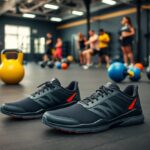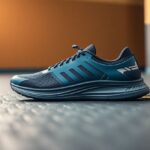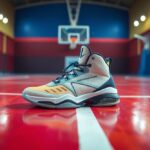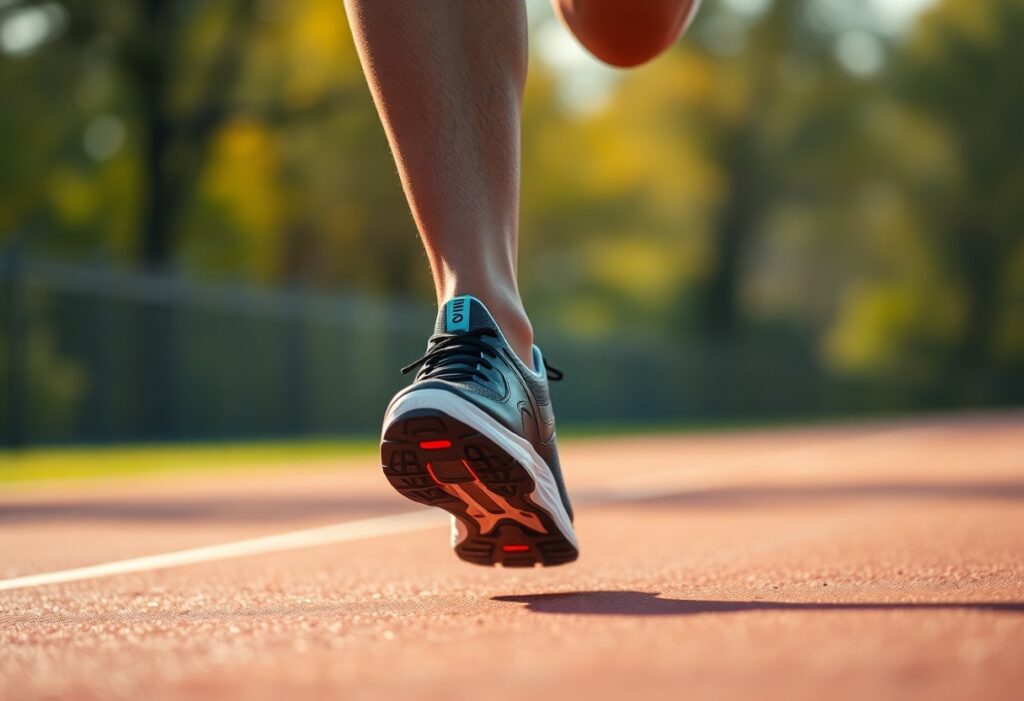
Delve into the revolutionary advancements in running footwear technology that have redefined the realm of performance optimisation for endurance athletes.
The landscape of performance optimisation in endurance running has been significantly transformed by advanced footwear technology, presenting you with remarkable opportunities to maximise your athletic capabilities. You will learn how state-of-the-art shoe designs can substantially decrease your metabolic expenditure and enhance running economy. By incorporating carbon fibre plates and innovative midsole materials, these advanced shoes offer exceptional energy return mechanisms that can potentially reduce your oxygen consumption by as much as 4%. Regardless of whether you are a seasoned professional or a committed amateur, grasping these biomechanical advancements can empower you to make informed decisions regarding your running equipment and potentially enhance your race times.
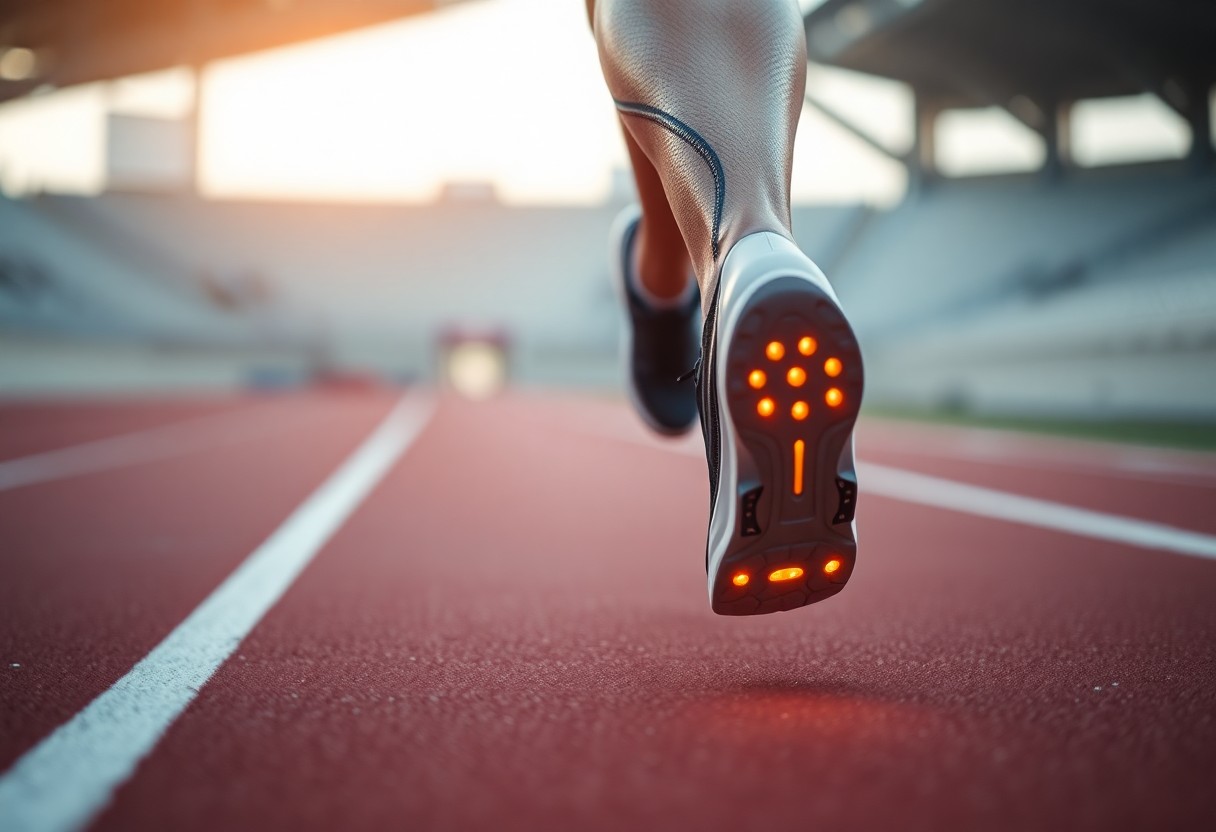 Continue your exploration to gain deeper insights into the mechanics of running footwear that promise to elevate performance:
Continue your exploration to gain deeper insights into the mechanics of running footwear that promise to elevate performance:
Unpacking Energy Return Mechanisms in Cutting-Edge Running Shoes
Advanced running shoe technology utilises intricate biomechanical principles to optimise energy transfer during movement. Innovative design features collaborate harmoniously to minimise metabolic expenditure, establishing a sophisticated mechanism that enhances running efficiency through strategic material engineering and precise geometric configurations. By concentrating on the dynamics of energy return, these shoes provide runners with a substantial edge in both performance and stamina, enabling prolonged running sessions with diminished fatigue, ultimately allowing athletes to push their limits further than ever before.
Investigating the Geometric Dynamics of Carbon Fibre Plates
Carbon fibre plates employ meticulous geometric engineering to redirect kinetic energy during the running motion. Optimal curvature angles ranging from 12° to 15° facilitate maximum energy storage and return, with finite element modelling indicating energy return efficiencies of up to 93% in prototype designs. These expertly designed plates act as a spring-like mechanism that diminishes muscular exertion during the toe-off phase, enabling runners to conserve energy over longer distances, which leads to improved endurance and overall performance.
Evaluating TPU and EVA in Midsole Technologies
Material selection has a profound influence on shoe performance, with thermoplastic polyurethane (TPU) emerging as the superior choice for midsole technology. Comparative studies highlight TPU’s significant advantages in terms of energy return and impact absorption, equipping runners with enhanced biomechanical efficiency across various running conditions. Choosing between TPU and EVA foam is critical for athletes striving to optimise their performance while minimising the risk of injuries during both training and competition.
| Energy Return | 18% higher in TPU |
| Oxygen Consumption Reduction | 2.4% lower with TPU |
A thorough examination of midsole materials reveals intricate performance characteristics. TPU showcases superior resilience in comparison to traditional EVA foam, maintaining consistent mechanical properties even after thousands of compression cycles. Runners benefit from more reliable energy return, diminished fatigue, and improved long-distance performance through advancements in material science, which can significantly influence their overall training outcomes and competitive results.
| Impact Absorption | TPU absorbs 37% more force |
| Rebound Elasticity | 89% maintained across 50,000 cycles |
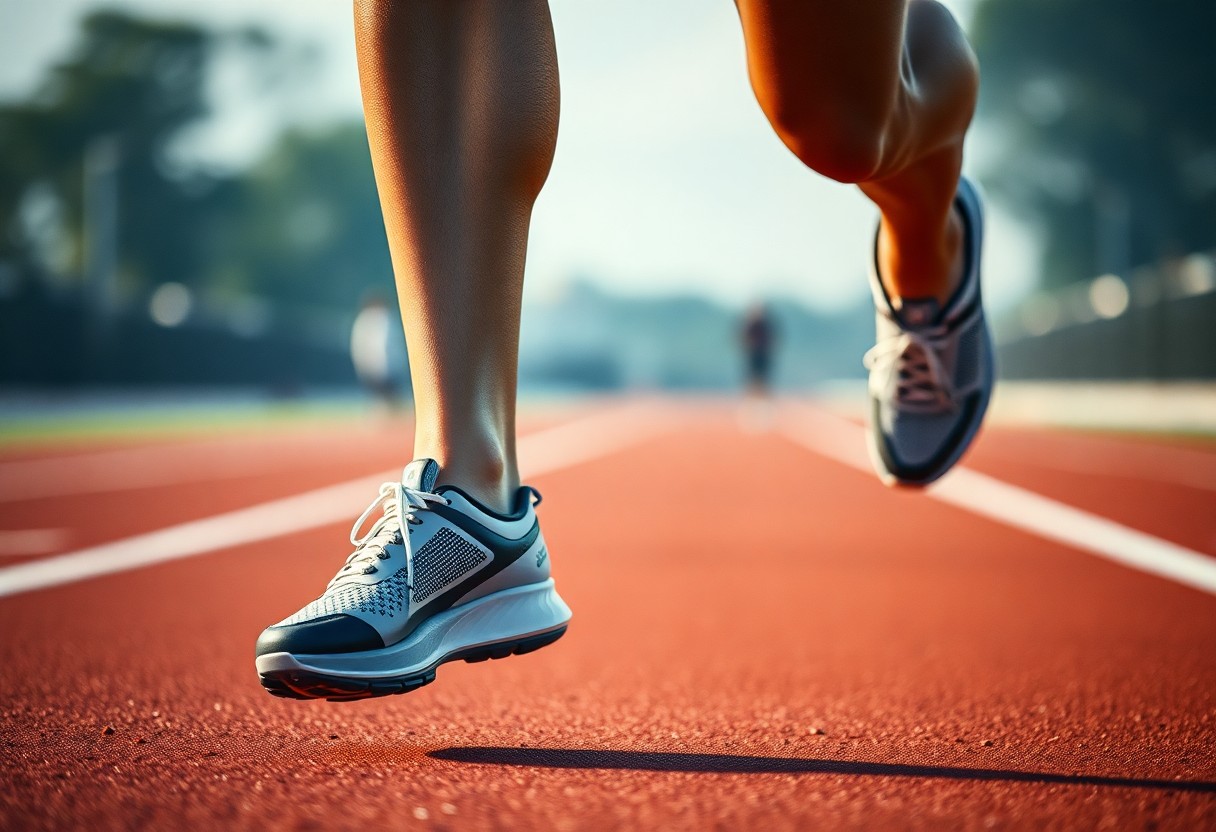 Continue your journey as we explore the impact of advanced footwear technology on metabolic efficiency:
Continue your journey as we explore the impact of advanced footwear technology on metabolic efficiency:
Evaluating Metabolic Efficiency: Identifying Who Gains Most from Advanced Footwear
The advantages of advanced footwear technology are not uniformly experienced across all runners. Gains in metabolic efficiency differ significantly among various demographic groups, with factors such as gender, age, and individual biomechanics playing pivotal roles in performance enhancement. Research has unveiled intricate patterns of metabolic response, indicating that the benefits of super shoes extend beyond mere performance metrics to encompass complex physiological adaptations unique to each runner’s biomechanics.
Analysing Gender-Specific Performance Improvements
Female runners exhibit a 3.2% improvement in metabolic power, compared to a 4.2% improvement in males, suggesting complex neuromuscular adaptations at play. Data regarding pelvic kinematics reveals a 14% greater reduction in hip adduction angle in females utilising advanced footwear, potentially elucidating the subtle differences in metabolic gains between genders. Understanding these distinctions can assist in tailoring training regimens and footwear selections to maximise performance benefits for each gender, thereby ensuring optimal outcomes.
Examining Age-Related Advantages and Endurance Performance
Masters athletes aged 40 and above demonstrate a 2.8% greater reduction in oxygen costs when wearing super shoes, likely compensating for reduced tendon elasticity. Analysis of tibial loading shows a 12% cumulative reduction in stress per kilometre for older runners, indicating potential benefits in both injury prevention and performance maintenance. These findings underscore the significance of advanced footwear technology in extending the competitive careers of older athletes who wish to remain active and competitive in their sport.
The benefits of advanced footwear technology related to age extend well beyond basic performance measures. Biomechanical studies indicate that older runners experience more significant adaptations due to compensatory mechanisms. Decreased tendon stiffness and altered muscle recruitment patterns interact with footwear technology to create a distinctive performance enhancement profile. Specifically, the energy return mechanism of the carbon plate appears to offset age-related biomechanical inefficiencies, potentially prolonging the competitive running careers of older athletes by alleviating the physiological limitations typically associated with aging.
Continue to explore the implications of advanced footwear technology on injury risks:
Exploring the Relationship Between Running Footwear and Injury Risk
The introduction of advanced footwear technology brings forth complex biomechanical interactions that necessitate a detailed analysis of potential injury risks. Runners must carefully evaluate the balance between performance enhancement and physiological adaptation. Longitudinal studies highlight subtle yet significant shifts in muscular recruitment patterns, joint loading, and proprioceptive feedback when transitioning to high-performance running shoes, reinforcing the importance of a well-rounded approach to training and recovery.
Injury Analysis: Weighing the Costs of Enhanced Performance
Biomechanical investigations indicate a 9% increase in Achilles tendon strain rates among users of super shoes during high-intensity training. Plantar pressure mapping reveals a 22% increase in forefoot loading compared to traditional trainers, particularly evident during challenging terrains such as downhill running. These findings imply that while metabolic efficiency may improve, runners must adopt targeted strength and adaptation protocols to mitigate injury risks and safeguard their long-term athletic health.
Modifying Training Protocols for Optimal Gait Adjustments
Your biomechanical reaction to advanced footwear necessitates strategic adjustments in your training regimen. Gait retraining is essential to optimise the unique energy return features of carbon-plated shoes. Runners must prioritise the development of neuromuscular patterns that align with the shoe’s biomechanical design, which may help reduce injury risks and maximise performance advantages.
Comprehensive gait adaptation strategies involve multifaceted approaches to effectively integrate advanced footwear technology into your training. Biomechanical analysis indicates that runners typically require approximately 6 to 8 weeks of progressive training to fully acclimatise to the distinct mechanical properties of super shoes. This adaptation period encompasses targeted eccentric strengthening routines, modified interval training methods, and vigilant monitoring of lower limb biomechanics. Serious runners and professional athletes can greatly benefit from periodic 3D gait analysis to track subtle changes in their movement patterns, ensuring the successful integration of advanced footwear technology with their individual biomechanics.
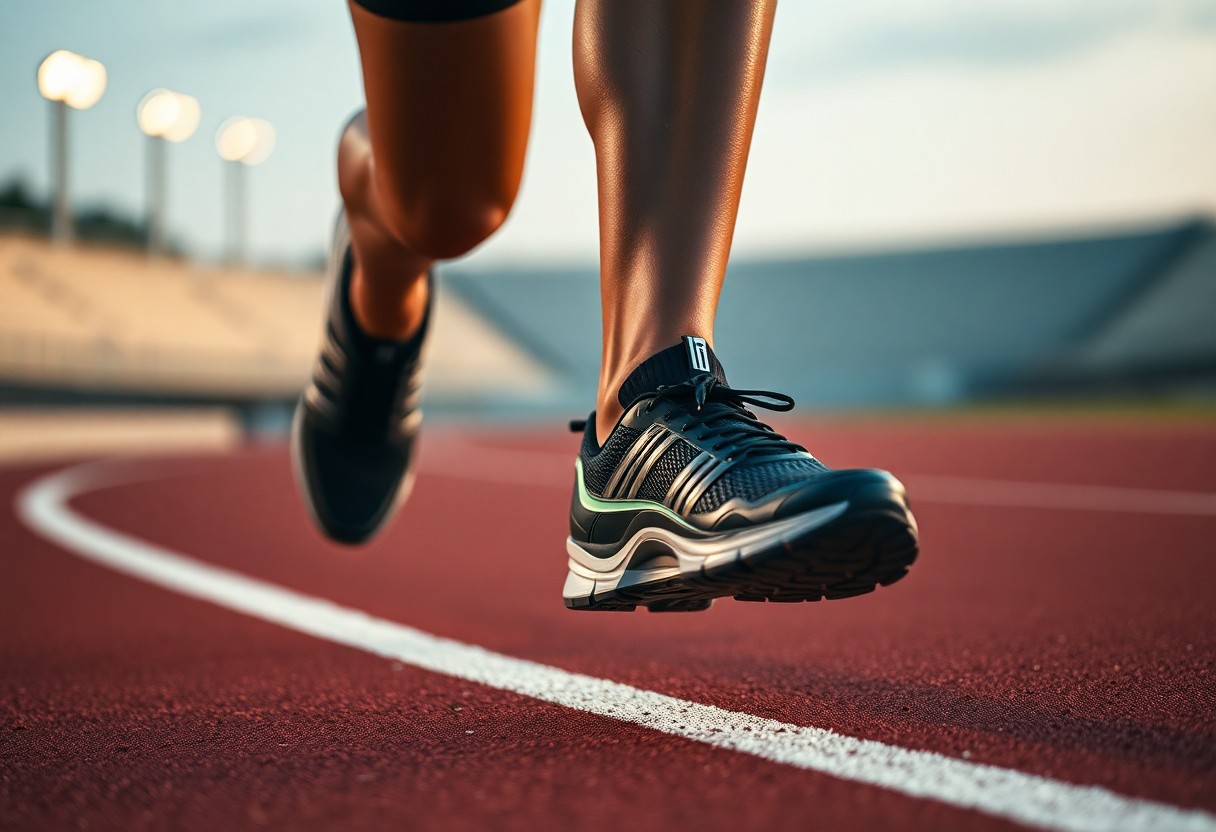 Explore the future of footwear technology and its implications for runners:
Explore the future of footwear technology and its implications for runners:
Anticipating Future Innovations in Running Footwear Technology
Innovative technologies are set to revolutionise the design of running shoes, pushing the limits of biomechanical efficiency and performance optimisation. Cutting-edge research is directed towards personalised solutions that adapt to individual biomechanics, harnessing advanced materials, computational modelling, and integrated sensor technologies to forge a new generation of intelligent footwear tailored for elite athletes.
Transforming Footwear Design with 3D Printed Midsoles
Optimisation algorithms for lattice structures now facilitate precise variations in regional stiffness that correspond with individual foot pressure maps. Prototype evaluations indicate a 5.1% increase in metabolic savings compared to conventional models, with computational design enabling unprecedented levels of customisation of midsole geometries to maximise energy return while minimising biomechanical stress. This pioneering approach ensures that each runner can achieve peak performance tailored to their unique physical attributes.
Integrating Smart Technology for Enhanced Performance Monitoring
Emerging sensor technologies are transforming running shoes into advanced performance tracking devices. Real-time ground reaction force feedback systems can decrease oxygen costs by 1.9% through fine-tuning cadence, offering runners immediate biomechanical insights during both training and competitive events. These advancements are crucial for athletes aiming to refine their technique and enhance performance metrics.
The integration of advanced sensor technology marks a significant leap in performance monitoring capabilities. Multi-axis accelerometers, pressure-sensitive matrices, and embedded microprocessors now capture intricate biomechanical data with remarkable accuracy. These intelligent systems analyse gait mechanics, impact forces, and energy expenditure in real time, providing runners with detailed insights into their movement patterns. Machine learning algorithms can now identify potential injury risks, optimise training loads, and recommend personalised technique adjustments based on comprehensive movement analyses, transforming running shoes from mere equipment into proactive tools for performance enhancement.
Lastly, gain a comprehensive understanding of the transformative landscape of advanced footwear technology in endurance running:
Welcoming the Future of Advanced Footwear Technology
In summary, you have explored the transformative landscape of advanced footwear technology in endurance running. Your insights now encompass how innovative design features such as carbon plates and high-performance midsole materials can significantly diminish metabolic costs while enhancing running efficiency. By leveraging scientific knowledge, you can appreciate that these shoes provide more than just marginal gains—they represent a substantial shift in athletic performance. Your investment in such technology could lead to improved running economy, reduced energy expenditure, and optimised biomechanical responses across various athletic profiles.
The Article Biomechanical Efficiency of Advanced Footwear Technology: Metabolic Cost Reduction and Performance Enhancement in Endurance Running appeared first on My Shoes Finder.
The Article Biomechanical Efficiency in Advanced Footwear for Runners Was Found On https://limitsofstrategy.com

